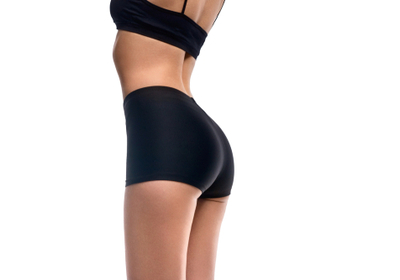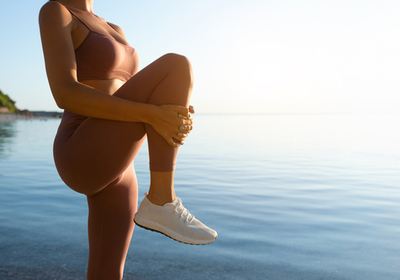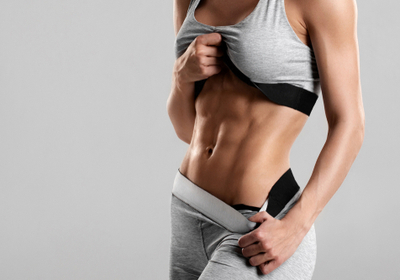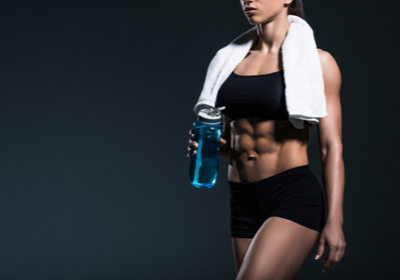VIDEO
Squats with Jumps, Side Lunges, Lunges, Standing Forward Leg Lifts, Plank Jumps Variation
- Core
- Legs
- Gluteus
- Hips
- Calves
Level:Intermediate
Trainer:Lauren Davidson
Equipment:Yoga Mat
Squats with Jumps, Side Lunges, Lunges, Standing Forward Leg Lifts, Plank Jumps Variation
- Core
- Legs
- Gluteus
- Hips
- Calves
Level:Intermediate
Trainer:Lauren Davidson
Equipment:Yoga Mat
1. Do squats and jump changing the side. 2. Step out with your right foot as wide as you can moving to the left and right. 3. Stand on your right knee. Stand up putting your legs up. 4. Start with a push-up position and put your legs forward one by one. Jump.
save to ...
RECOMMENDED FOR YOU
- Core
- Legs
- Abs
Duaration: 00:14
save to playlist
- Lower Back
- Shoulders
- Gluteus
Duaration: 00:15
save to playlist
- Core
- Biceps
- Triceps
Duaration: 00:15
save to playlist
- Back
- Shoulders
- Hamstrings
Duaration: 00:15
save to playlist
- Core
- Arms
- Back
Duaration: 00:15
save to playlist
- Core
- Arms
- Legs
Duaration: 00:14
save to playlist
- Core
- Legs
- Abs
Duaration: 00:15
save to playlist
- Core
- Arms
- Back
Duaration: 00:15
save to playlist
- Core
- Legs
- Abs
Duaration: 00:15
save to playlist
- Core
- Abs
- Lower Back
Duaration: 00:15
save to playlist
- Core
- Arms
- Legs
Duaration: 00:14
save to playlist
- Core
- Back
- Legs
Duaration: 00:15
save to playlist
- Biceps
- Upper Back
- Lower Back
Duaration: 00:15
save to playlist
- Core
- Legs
- Gluteus
Duaration: 00:15
save to playlist
Blog
Many people want to have beautiful thighs. Unfortunately, to keep them in good shape requires long and hard work. Here are some exercises that are sure to help you work out your thighs.
Cross Lunges
This deep stretch will improve your thighs and give you energy. Spread your legs and point your feet outward. Bending your knees, lower yourself into a squat position. Put the palms on your hips above your knees to deepen the squat and stretch further. Jump up and put your feet in front of each other, straightening and crossing your legs as you land. Get back to the position from the start and repeat the actions with the opposite leg. Repeat this exercise as many times as possible, alternating between the two legs, for at least 40 seconds.
Knee Squats
Knee squats together are better to strengthen the inner thighs, quads, and hamstrings than regular squats. And to avoid wasting time, you can work your arms at the same time. Stand up straight with your feet together. Pick up some dumbbells, bend your arms at the elbows, and bring them into contact with your shoulders. Perform squats with your knees bent and your hips pulled back as if you were going to sit on a chair. Keep your feet together throughout the exercise holding the weight on your heels. Now extend your arms upward. Return to the start without transferring the weight to your toes. Do 10 repetitions.
Elbow Plank Leg Lift
Add leg lifts to the regular elbow plank to improve hip work. Lie on your side, and bend your right arm at the elbow leaning on it. Stretch your leg so that your body is in a straight line. Try to lean only on the outer edge of your right leg. Place your left hand on your hip. Feel your spine stretching and the tension in your abs, then raise your left leg slightly to your hip. Slowly put it back down. Without bending at the waist or leaning on your shoulders, place the weight on your elbows. Do about 15 reps on both sides.
Leg bend swing
This is one of the most popular exercises for strengthening the hips and thighs. It is suitable for everyone, requires no additional equipment, and does not involve the spine. This combination works the posterior, anterior, lateral, and medial thighs. Start doing the plank with your palms under your shoulders and your knees under your pelvis, keeping your back in position. As you exhale, push up on your heels; do 20 reps on each leg for four sets.
Side push-ups
If this is your first time doing this exercise, you don't need any dumbbells - learn the leg movements first. Holding a dumbbell in your right hand, run hard to the left and place your right hand onto your right leg. Lower your hips as far as you can and lean on your heels. Point your toes forward and bend your leg at a 90-degree angle. Push off with your left foot and get into a courtesy position: left foot back, right foot forward. Raise your arms with weights upward, pointing your feet up. Keep your hips and legs tense. Do not return to the start for the repetitions, but go straight from squat to side position. Perform three sets of 10 reps each, then switch sides.
Final Words
If you know that beautiful thighs are a reality and you have these exercises, then why not try and make your body better?
Read more
People often underestimate hamstrings. Often, focusing on training the quadriceps and calves, hamstrings seem less important. However, you should remember that neglecting any muscle has aesthetic and medical consequences that can be avoided if you work it properly. The reason you shouldn't ignore these muscles is not just about the symmetry and appearance of your body. Hamstring weakness is one of the most common causes of injury in most professional athletes.
The best way to strengthen your leg muscles is to work them out properly. So let's have a look at the exercises.
Barbell 90
The main advantage of this exercise is that you don't need much equipment, just a simple barbell. Starting in a standing position and holding the barbell on your shoulders, keep your back straight. While bending your knees slightly, tense your hips, and bend forward 90 degrees. Then return to the starting position inhaling. Except for hamstrings, this exercise will also strengthen your hips and back.
Hyperextensions
Hyperextensions are a great workout for your hamstrings as well as the lower back and glute muscles. Sit on the hyperextension training machine comfortably with your heels pressed against the platform at the bottom of the trainer. Place your arms crossed in front of your chest or behind your head. Slowly lower yourself down until you inhale and feel the stretch in your lower back and leg muscles. Without stopping at the bottom point, straighten up to the starting position and exhale. Return to the beginning position then. Maintain your head in line with your torso, keeping your back straight throughout the exercise.
Tights Up
This exercise can be done on the playground with two pull-ups or simply by placing your feet on a chair or bench. We will present a variation of the home exercise.Choose a sitting position on the floor with your feet on a chair. Lift your torso with your hands so that the tights are in the air. Bending your knees, raise the tights so that your body is paralleled to the floor. Perform 7-8 repetitions.
Single-Leg and Dumbbell
The exercise requires a good sense of balance and gives you good results. With a dumbbell in your hand, bring one leg back and keep it on the floor until the end of the exercise. Then return to the previous position. Repeat this exercise several times before you have tired.
Final Words
Hamstrings may look insignificant, but that has nothing to do with the fact that you can skip working these muscles. As a matter of fact, stronger hamstrings prevent you from many injuries. Therefore, don't delay and start exercising these muscles now.
Read more
The Kardashians have created many beauty trends, one of which is having beautiful buttocks. So, in this article, we'll talk about building great gluteus muscles so you can look as attractive as Kim, Kourtney, and Khloe. Let's begin by looking at the anatomy. The glutes are made up of three main parts.
The gluteal maximum muscles, which are the largest muscles in the body, help to maintain balance when walking and running. They allow your legs to move sideways and are also responsible for contouring the shape of the buttocks.
The gluteus medius is overlaid in part by the gluteus maximus and is located at the top of the pelvis. It is involved in leg extension, lateral flexion, and body stabilization during the movement.
Finally, below is the gluteus minimus. Both are in charge of leg induction and body stabilization, as well as shaping the thigh line.
Training for the glutes
Building your glute muscles isn't easy, particularly when you're on a tight schedule. However, by working out at least three times a week and never giving up, you will quickly reach your goal. To help you achieve your goals, we've compiled the best exercises for your gluteus muscle development.
Deep squat with a barbell
This is one of the basic exercises that help to develop this muscle effectively. From the starting position - with your feet apart - lower your pelvis below the knees. Keep your lower back straight and make sure the knees do not go over your feet. Spreading your legs wider apart puts more pressure on your hips.
Romanian deadlifts
Stand up straight with a slight bend at the waist. Holding the dumbbells in both hands, bend over and pull your pelvis backward. Reaching a point just below your knees, return to start.
Dumbbell split squat
Exercise with a straight back and one leg stepping forward while the other leg is thrown into a brace behind you. Squat down and perform the exercise with both legs.
Back lunges
From the standing position, take a large step backward and drop down to form a bent-over position. Return to start and repeat this exercise for the other leg. Make sure your knee is bent at a right angle and not sticking out past your toes, do 20-30 reps. It is important to step backward precisely, maintaining rhythm and balance.
Having great gluteus is everyone's dream, and luckily, developing these muscles isn't difficult if you know the right exercises. So why not take advantage of our tips and start working towards your goal right now?
Read more
Gorgeous abs are perhaps the biggest dream of all fitness enthusiasts as well as professionals. However, not many people know how to get abs and pretty often make a lot of mistakes while trying to work on their abs. Therefore, in this article, we will talk about abs and how to get them quickly and stress-free
Your Abs Are What You Eat
Not many people know it, but your diet is extremely important for achieving relief abs. Of course, it doesn’t mean that you have to starve yourself or follow weird diets, but working out is definitely not enough to achieve such a goal. The thing is to build muscles you need protein, which means that you have to include more protein into your diet. At the same time, high qualities of sugar and Natrium (salt) provoke swelling that sort of hides the relief of the muscles even if you don’t have much belly fat. Thus, to get the six-pack, you have to make your diet healthier as well as drink enough water, and together with exercising, it will help you get the body of your dreams.
Don’t Overestimate Your Abilities
Many people think that the more they exercise and the less they eat - the better. Obviously, it’s not true. You have to adequately evaluate your abilities and consider those while working out and dieting. Trust us, starving yourself and exercising for 3 hours every day won’t bring better results. It will only damage your health, both physical and mental. So don’t worry if you cannot see the results after a few weeks of training and healthy dieting, just keep going and you’ll surely reach your goal.
Core and Back Muscles Are Essential
Probably 90% of people who would like to get abs usually forget about the core muscles and work only on their abs. This is a huge mistake. As a matter of fact, to have relief abs, you have to work on your core muscles simply because these muscles are close to each other, moreover, abs are a part of the core, so it’s impossible to get relief abs without working on the core. Therefore, working on your core will significantly boost the entire process. In addition to that, you shouldn’t forget about the back muscles. You see, our posture heavily influences the way our belly looks. You have probably already seen skinny people with weird and unproportioned bellies. Well, that happens because they have weak back muscles and their spine is curved in the way that makes their bellies sort of come forward. So in order to avoid that, make sure to strengthen your back muscles too.
Best Workouts for Abs
To wrap up, we would like to list some of the best workouts for abs, core, and back. So here they come:
Plank
Diagonal twists
Deadlift
Pushups
Bent-over row
Plank push-ups
Pull-up
Crunches
TRX suspension row
Leg lifts from lying position
Lat pulldown
Final Thoughts
A stunning six-pack is the biggest dream of many fitness enthusiasts and, luckily, it’s totally possible to make it come true. So consider the things we talked about in this article and start moving toward your goal now.
Read more
СWorking on the core muscles is not only essential for good looks, but also for your health. In this article, we will talk about core muscles and how to develop them. So without any further ado, let us begin.
Core Muscles: What Do They Consist of?
To put it simply, core muscles consist of two main groups, which are central and peripheral. The central muscles resemble a sac that protects internal organs by covering the abdominal cavity. In other words, we need these muscles to keep the vital organs safe. In fact, if we didn’t have these muscles, a slight kick in the abdominal area would cause significant damage to vital organs. Central muscles can be divided into several parts, which are:
Front - abs
Lateral parts - oblique muscles and the surrounding muscles
Back - the muscles that support the spine
Upper wall - diaphragm
Lower wall - pelvic floor muscles
The second group of core muscles, the peripheral muscle group, consists of the trapezius, the latissimus dorsi muscle, the pectoralis muscle, the buttocks, and the muscles of the shoulder girdle. These muscles are essential for our posture and back health, which means that developing those is rather important for everyone who wants to be healthy and look beautiful.
Both central and peripheral core muscle groups are extremely significant for our health, posture, as well as the way we look. Therefore, in the next paragraph, we are going to talk about the best exercises for strengthening these muscles.
Best Workouts for Strengthening Core Muscles
So we made it pretty clear that developing core muscles is important for pretty much everyone. So what exercises can you do to strengthen these muscles? Well, here they come:
High plank
Supine toe tap
Hollowman
Bird Dog
Crunches
Bicycle crunch
Superman
Warrior crunch
Supine leg lifts
Elbow to knee
Bridge
Mountain climber
V-sit
V-ups
Side plank
Plank shoulder taps
Turkish get-up
Elbow plank twists
As you can see, there are many workouts that will no doubt help you develop core muscles and eventually become healthy and fit. So why don’t you grab your fitness mat and try at least some of these useful exercises to see their effectiveness yourself?
Wrapping Up
Not only are core muscles essential for beautiful abs, but also rather important for your back health and posture. Furthermore, these muscles protect your internal organs, which is a pretty important feature. Therefore, if you regularly train but you always avoid core exercises thinking they are not as important as the workouts for your legs or arms, you better stop doing that because core muscles are perhaps the most important muscle group in your body.
Read more
SAVE TO ...





